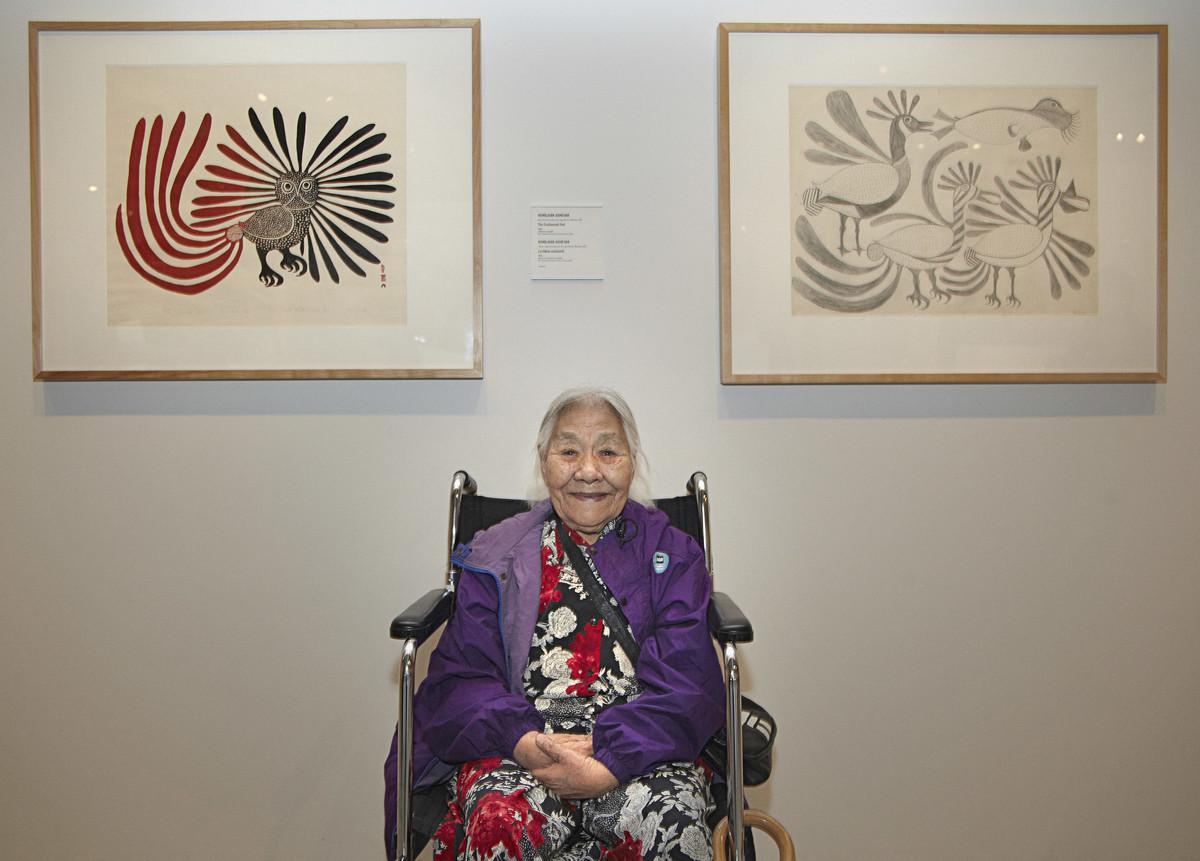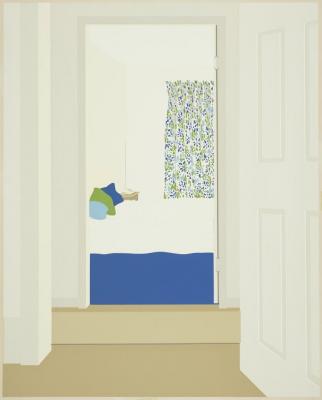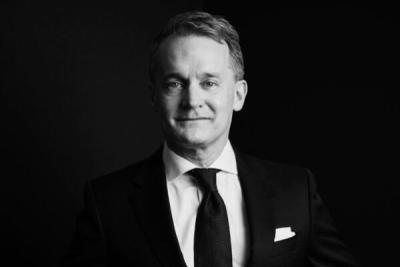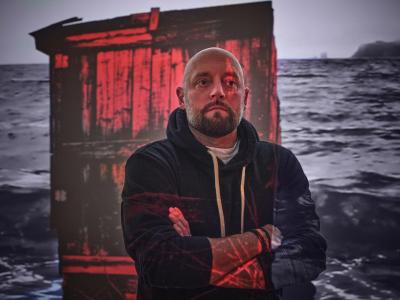How Kenojuak Ashevak’s prints made history
Learn how the grandmother of Inuit art became one of Canada’s most celebrated graphic artists

Kenojuak Ashevak. The Enchanted Owl, 1960. Stonecut on paper, Sheet: 59.7 × 65 cm. Art Gallery of Ontario. Gift of Samuel and Esther Sarick, Toronto, 2002. © Estate of Kenojuak Ashevak. Reproduced with the permission of Dorset Fine Arts. Photo: AGO. 2002/9460
If you were sending mail in Canada during the 1970s, there’s a chance you’re already familiar with the work of Kenojuak Ashevak (1972 - 2013). Widely known as the “grandmother of Inuit art,” Kenojuak Ashevak’s fluid storytelling in prints, drawings, and sculpture has marked her as one of Canada’s most celebrated artists.
One of the artist’s most notable and well-known works is The Enchanted Owl (1960). It was featured on a stamp by Canada Post in 1970 to commemorate the centennial of the Northwest Territories, marking the first time an Inuk artist was featured by Canada Post. A symbol of what was to come, Kenojuak Ashevak was a trailblazer for Inuit art and is often credited with introducing it to global audiences.

Kenojuak Ashevak. The Woman Who Lives in the Sun, 1960. stonecut on paper, Overall: 49.7 x 66.2 cm. Art Gallery of Ontario. Gift of Samuel and Esther Sarick, Toronto, 2002. © Estate of Kenojuak Ashevak. Reproduced with the permission of Dorset Fine Arts. Photo: AGO. 2002/9464
Kenojuak Ashevak was born in Ikirisaq, a camp on the south coast of Baffin Island, Nunavut. She lived a traditional hunting lifestyle, moving from camp to camp throughout South Baffin and Nunavik. Her journey with drawing began while being treated for tuberculosis at Parc Savard Hospital in Quebec City Hospital from 1952 to 1955. There, she became involved with a hospital program that taught patients arts and crafts and sold the art on patients’ behalf.
After marrying fellow artist Johnniebo Ashevak (1923-1972), Kenojuak Ashevak settled in Kinngait, an Inuit Hamlet located on Dorset Island in Nunavut. Here, she met James Houston, a civil servant and art promoter who established a studio for Inuit artists to create soapstone carvings, prints, and drawings for sale. Kenojuak Ashevak began experimenting with materials from Houston’s wife, and after developing a sure hand, never stopped experimenting throughout her practice.
In 1959, the Inuit of Kinngait formed the West Baffin Eskimo Co-operative, where the artist’s early work was featured. While she also sculpted, her graphic prints quickly gained attention. Kenojuak Ashevak’s prints often depicted stories of mystical figures and arctic wildlife with a particular focus on birds, especially owls. Her appreciation of owls in her prints perhaps stemmed from how she identified with the bird.
“I am an owl, and I am a happy owl,” she once stated in Landmarks of Canadian Art “I like to make people happy and everything happy. I am the light of happiness and I am a dancing owl.”

Kenojuak Ashevak. Bountiful Bird, 1986. four colour lithograph on paper, Sheet: 58 × 77.6 cm. Art Gallery of Ontario. Gift of Samuel and Esther Sarick, Toronto, 2002. © Estate of Kenojuak Ashevak. Reproduced with the permission of Dorset Fine Arts. 2002/9545
Kenojuak Ashevak played with symmetry, negative space, and vibrant colour. While she thought about the colour schemes of her works in advance, she let the forms come to her unconsciously as she worked.
“I just took these things out of my thoughts and out of my imaginations,” she said. “I’m just concentrating on putting it down on paper in a way that is pleasing to my own eye… my sense of colour and form.”
For the artist, art was both an inextricable part of her life and a means to support her family and community, the latter being a very important value for the artist. After the passing of her first husband, Kenojuak Ashevak shared that one of the main reasons she continued to create art was to support her family. In Inuit Art Quarterly she shared: “This is my job and my love. I cannot imagine life without art.”

Artist Kenojuak Ashevak at the AGO. Photo credit: Craig Boyko
The Enchanted Owl wasn’t the only time Kenojuak Ashevak’s work was featured on a national level. Two more of her works were featured on Canada Post stamps: The Return of the Sun (1961) and The Owl (1969). Another one of her owls, this time the Owl’s Bouquet (2007), was featured on the 2017 $10 banknote commemorating Canada’s 150th anniversary of the confederacy. This marked the first time an Inuit work has been incorporated into the design of a Canadian banknote.
Kenojuak Ashevak’s accomplishments don’t stop there. She was a Companion of the Order of Canada and received the Governor General’s 2008 Award in Visual and Media Arts. She also received the 1996 Lifetime Achievement Award at the National Aboriginal Achievement Awards Ceremony and was the first Inuk artist inducted into Canada’s Walk of Fame in 2001. The artist has also received honourary degrees from the University of Toronto and Queen’s University.

Kenojuak Ashevak. Large Bird from the Sun, 1979. three colour stonecut and stencil on paper, Sheet: 62.5 × 83.1 cm. Art Gallery of Ontario. Gift of Samuel and Esther Sarick, Toronto, 2002. © Estate of Kenojuak Ashevak. Reproduced with the permission of Dorset Fine Arts. Photo: AGO 2002/9526
In the summer of 2018, the AGO celebrated the power of Inuit art by bringing together two extraordinary artists – Kenojuak Ashevak and her nephew Timootee (Tim) Pitsiulak – in Tunirrusiangit.The exhibition was the first time Inuit art was showcased in the AGO’s largest exhibition space, the Sam & Ayala Zacks Pavilion.
Kenojuak Ashevak is the AGO’s most represented Inuk artist with 183 of her works in our Collection. Until December 8, 2024, a selection of the artist’s prints is on view at the AGO in gallery 211, located on Level 2 in the Thomson Collection of Canadian Art. This includes the beloved Enchanted Owl.
Opening on February 15, 2025, the AGO installation Kenojuak Ashevak: Highlights from the Dr. Ronald M. Haynes Collection will feature 14 prints by Ashevak from the collection of Dr. Ronald M. Haynes, who largely collected Inuit sculptures and works on paper. This is the first of two installations from Haynes’s collection, and all works featured are promised gifts to the AGO.




















